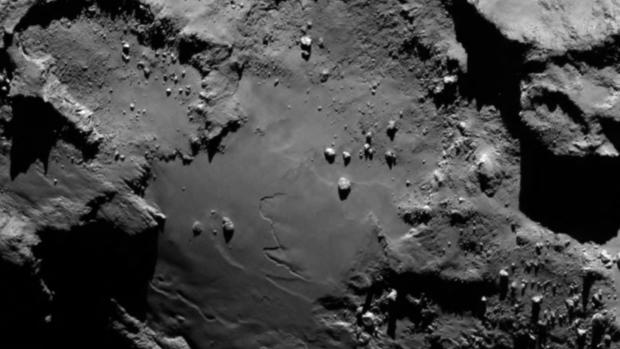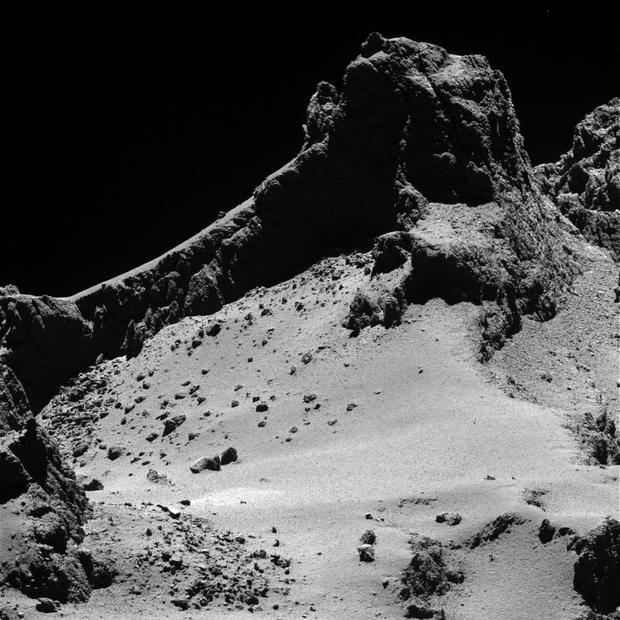5 cool things Rosetta has learned about comet 67P
The Rosetta mission grabbed the world's attention in November when a tiny robotic lander managed to hitch a ride on a speeding comet some 317 million miles from Earth.
Now, data from the European Space Agency's $1.7 billion Rosetta probe is offering the first detailed portrait of this two-and-a-half mile wide comet known as 67P/Churyumov-Gerasimenko, which could in turn teach us about conditions during the early solar system when comets formed.
The rubber duck of comets
Using images from the OSIRIS camera system aboard the Rosetta craft as it orbits the comet, researchers were able to piece together a model of the space rock's overall shape. Most of it, anyway -- about 30 percent of it is in darkness. Reconstruction techniques revealed that the comet is an irregular shape. It looks a little like a rubber duck, with two lobes connected by a neck. Researchers question whether this means the comet formed as a result of two rocks coming together 4.5 billion years ago, or whether the shape was somehow carved out.
No water ice here
Fabrizio Capaccioni and colleagues found that the comet's nucleus is covered with a range of organic compounds -- mostly carbon-hydrogen and/or oxygen-hydrogen chemical groups -- but very little water ice. This suggests the sunlit surface of 67P is generally dehydrated. Another study suggested that most of the water ice sublimates -- that is, goes straight from ice to gas, skipping the liquid phase -- from the "neck" of the comet.
It runs hot and cold
That study also found that the temperature on the comet ranges widely. Samuel Gulkis of the Jet Propulsion Laboratory and his team found that the northern hemisphere of the comet is nice and warm, while the southern hemisphere is somewhat cooler. The researchers suggest this demonstrates seasonal changes on Comet 67P.
A fluffy center and bumpy face
Another group led by Holger Sierks examined the solid center of the comet -- its nucleus -- and found that it is made of dust, rock and frozen gas. They concluded that it may be highly porous, fluffy, even -- as much as one can conceive of a comet as being fluffy. The researchers also describe finding a crack between the head and the body of the neck, cliff faces with strange goosebumps and "clusters of small, bright spots (0.5 to 1 m), which might be ice-rich."
One complicated coma
Myrtha Hässig and colleagues measured the composition of the comet's coma, the thick cloud of dust and gas that envelops 67P's nucleus. They found a mixture of water, carbon monoxide, and carbon dioxide throughout the coma, and observed fluctuations that suggest diurnal (night-day) differences and could support the seasons theory. The findings demonstrate a complex relationship between the comet's nucleus and its coma. Researchers are also hoping to use the coma to better understand how comets evolve, looking at things like the ratio of dust to gas which, in turn, should help estimate how quickly it is out gassing and losing mass.

